We are still en route to DBO 1-1, which is the first sampling site on our expedition. We passed St. Lawrence Island very early this morning to our east and Russia to the west. Today was a bustle of activity with lab set up and learning how to use some of the more intricate sampling tools. One of these larger pieces of equipment is the CTDA research tool that is submerged in the water to measure conductivity (salinity), temperature, and depth., which stands for conductivity (or salinity...higher conductivity means higher salinity), temperature, and depth. The CTDA research tool that is submerged in the water to measure conductivity (salinity), temperature, and depth. on the Healy also has 24, 12L Niskin bottles around it in order to collect water samples.
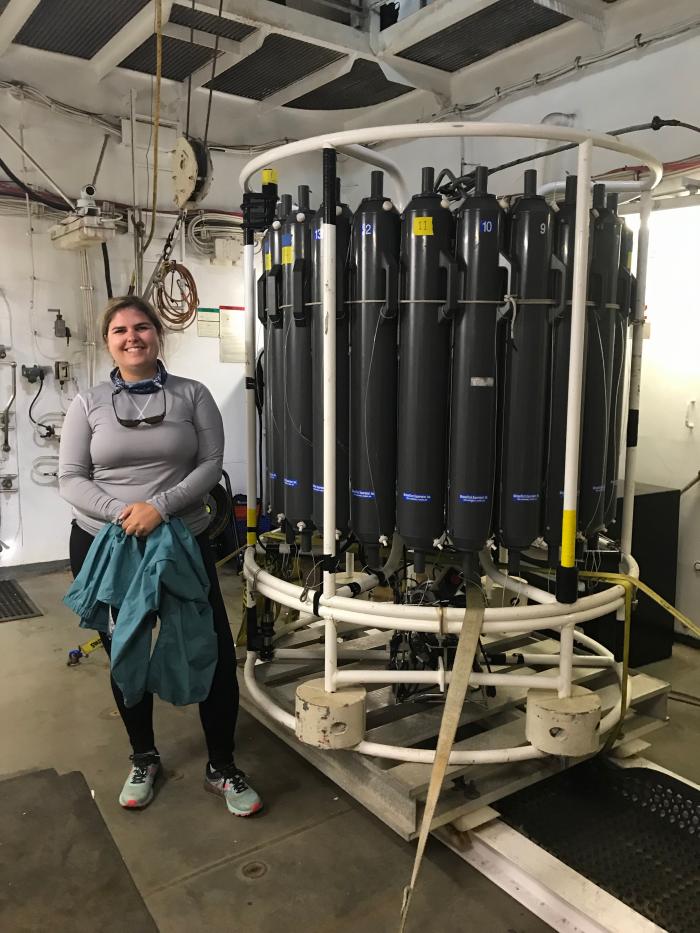
To get us all ready to deploy this equipment at the sampling sites, CTDA research tool that is submerged in the water to measure conductivity (salinity), temperature, and depth. School was offered by Leah McRaven, a cruise administrator, and Kristen Beem from STARC. The CTDA research tool that is submerged in the water to measure conductivity (salinity), temperature, and depth. is so large that it is kept in its own small hanger on the starboard (right) side of the ship from where it is deployed by a team of technicians.
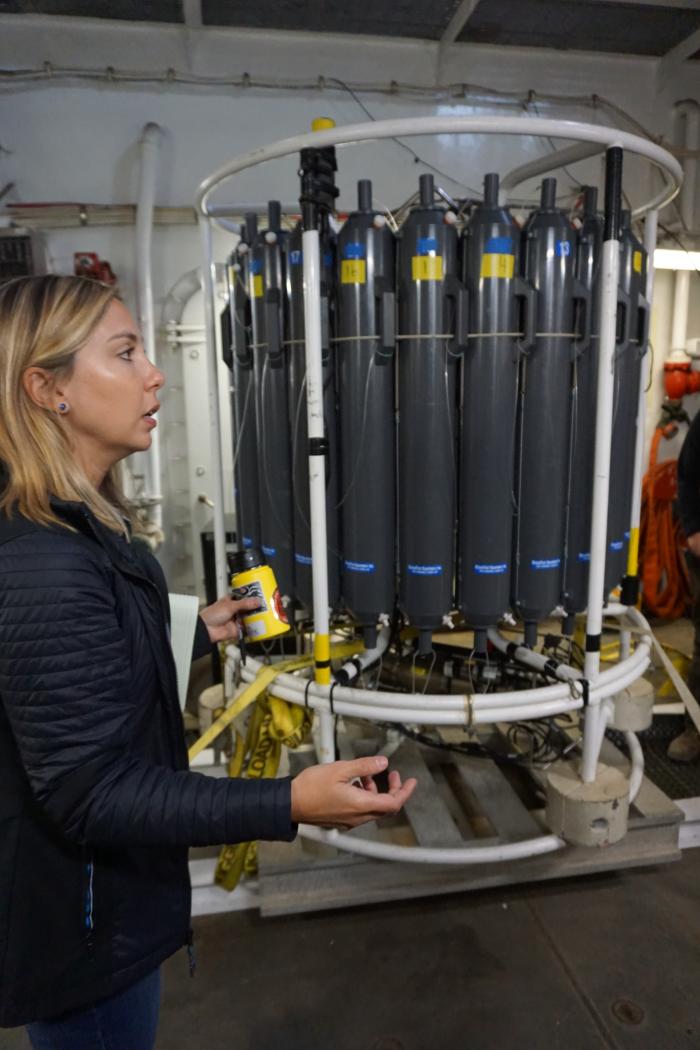
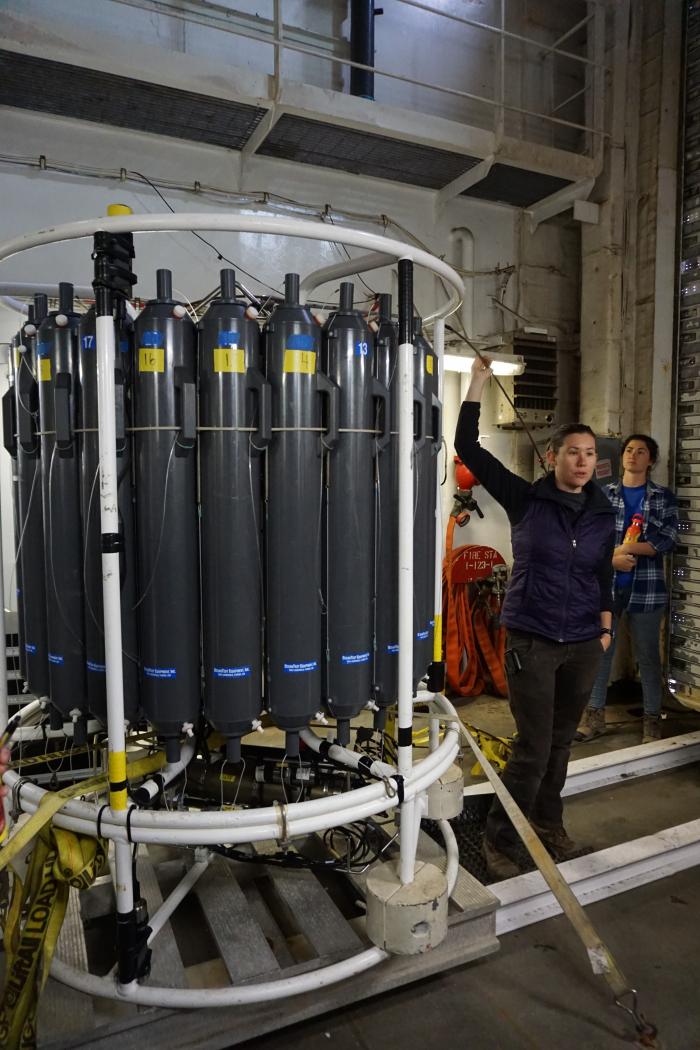
As the CTDA research tool that is submerged in the water to measure conductivity (salinity), temperature, and depth. is lowered into the ocean at about 60 meters per minute, the sensors on the bottom collect continuous conductivity, temperature, and depth data. The 24 Niskin bottles are opened on either end before they are deployed (why???). The CTDA research tool that is submerged in the water to measure conductivity (salinity), temperature, and depth. technicians can then control when each of the Niskin bottles close to collect water. This means that this equipment can take water samples at 24 depths in one deployment! Once the CTDA research tool that is submerged in the water to measure conductivity (salinity), temperature, and depth. gets back on deck, water samples are collected using the white nozzles at the bottom of the Niskin bottles. This ensures that accurate amounts are taken and that no water is wasted.
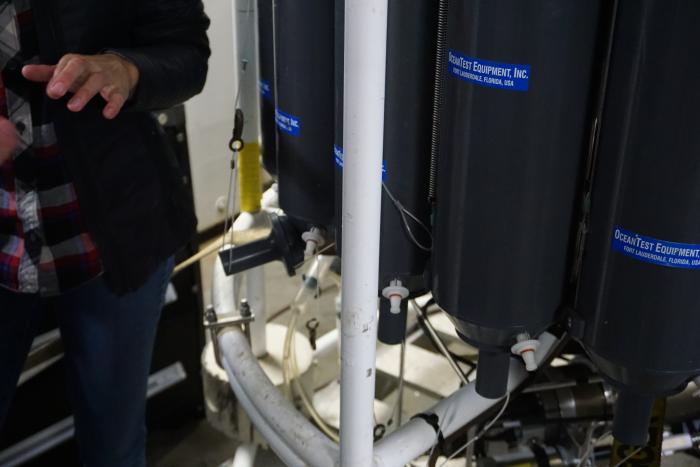
The data from the sensors shows up in the lab in real time as it descends and then provides a readout for all the scientists on board. As the depth increases, these graphs show how conductivity (or again...salinity!) and temperature changes. The data below was taken today showing depth on the y-axis. The temperature decreased drastically (also known as a thermocline) until a certain depth and then leveled off. The salinity increased (also known as halocline) until a certain depth and then also held steady. These CTDA research tool that is submerged in the water to measure conductivity (salinity), temperature, and depth. readings will be taken at every sampling site throughout the expedition.
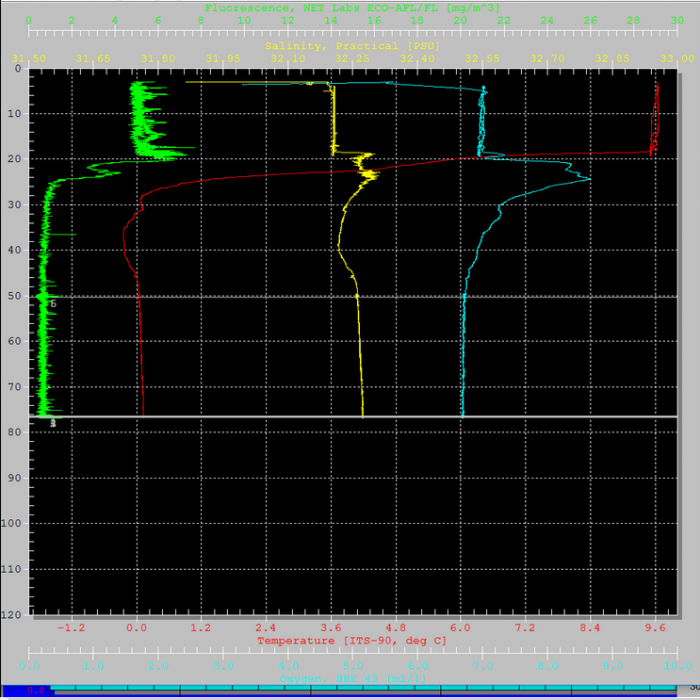
A Question From the Crow's Nest
Why would Niskin bottles need to be opened before being lowered to deep depths?
Answer from previous post: Albedo is the solar radiation reflected by the planet. The polar regions have high albedo because the white snow and ice reflects this solar radiation. As the sea ice melts, more solar radiation will be absorbed and warm the polar regions very quickly.

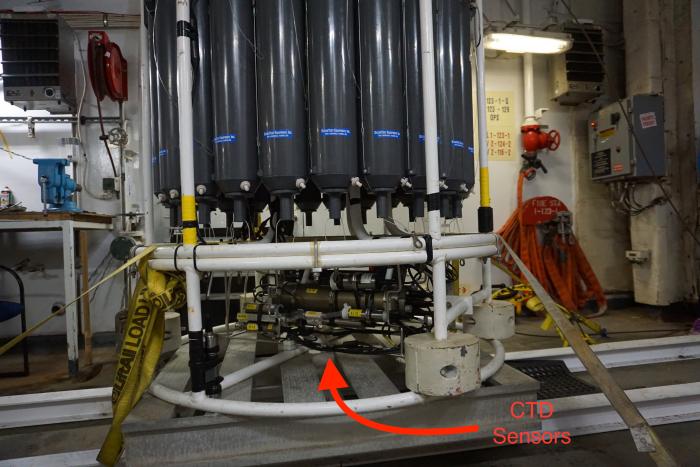
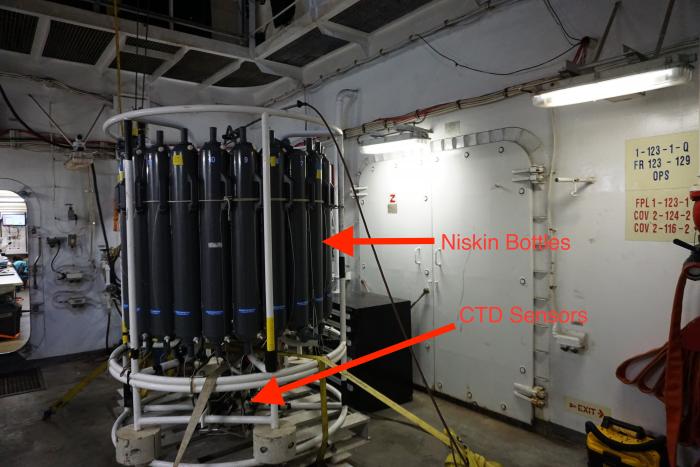

Comments